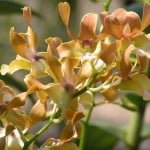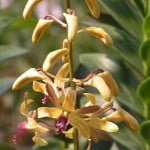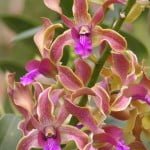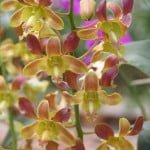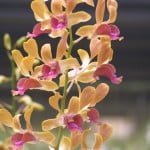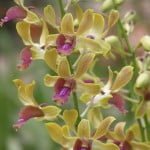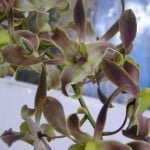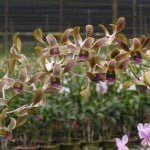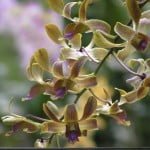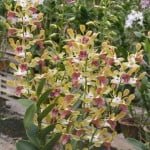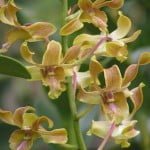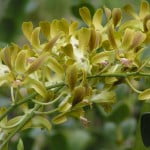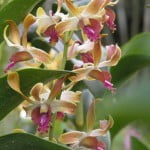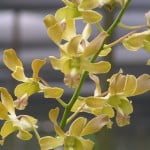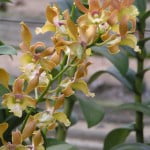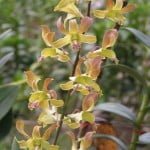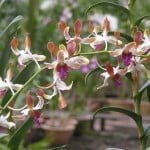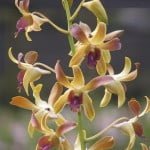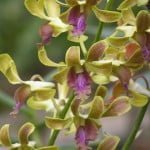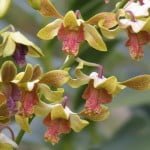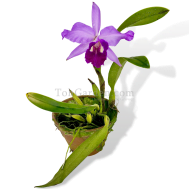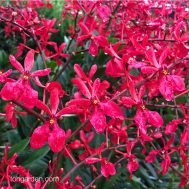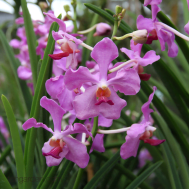Frequently unknown to most layman, orchids can produce many phenotypic colours and traits in a single cross with multiple alleles suppressing each other. Taking for example the above crossing between the brown curly, purple lipped Dendrobium Spatulata and yellow and red lipped Dendrobium SGH. Their progenies gave rise to a bizarre phenotypic combination of orchids as shown below.
Note the number of different variant from this spatulata type x with phalaenopsis hybrid type of Dendrobiums. Some have more curly petals as they gain more Spatulata characteristics, while others have less curly petals due to the influence of the Dendrobium Phalaenopsis genetics. Note that most of the progenies retained the red/purple lipped characteristics of both mother plant, however for some of them, the red/purple lip characteristic is missing. This is probably attributed to a pair of double recessive alleles resurfacing in progenies without this characteristic. Some gain more brownish characteristic, other gain more yellowish characteristic and the rest have intermediate colours between brown and yellow for their petals.
This example was specifically used to illustrate that phenotypic traits can be derived from both parent plants. Some progenies may have traits from either one parent strongly expressed while other progenies may have an intermediate between various characteristics of the two parents. Secondly, recessive traits underlying both parents plant may also resurface (E.g. for some of the progenies, the red/purple lip characteristic is absent despite being present in both parents). Recessive traits may stay dormant for several generations before resurfacing again many generation later.
That’s how interesting a single cross can be and particularly in this crossing as the colours and traits of both parent plants are greatly different and where recessive traits were observed. The greater number of difference in phenotypic traits, the greater number of variants in the offsprings. In fact, for this crossing, almost every single plant were unique from the others. =)

